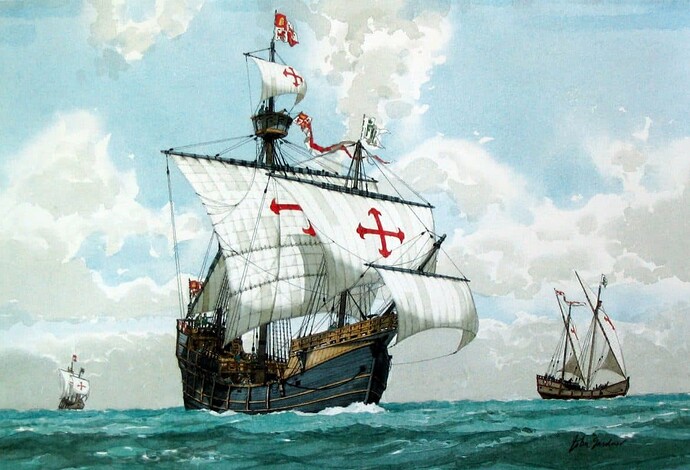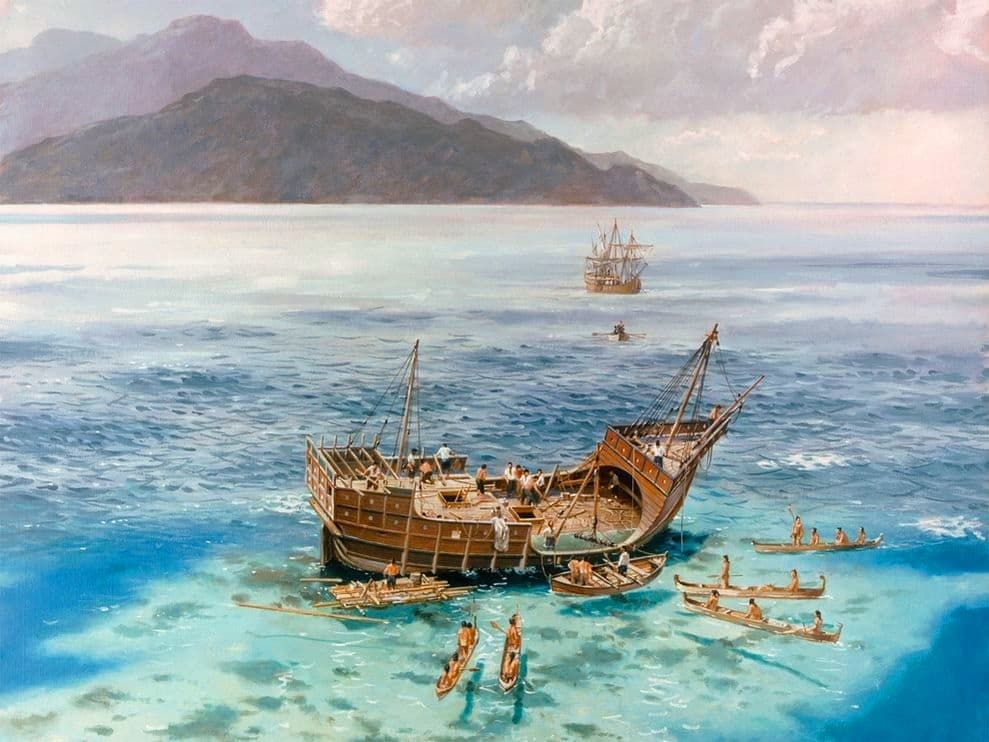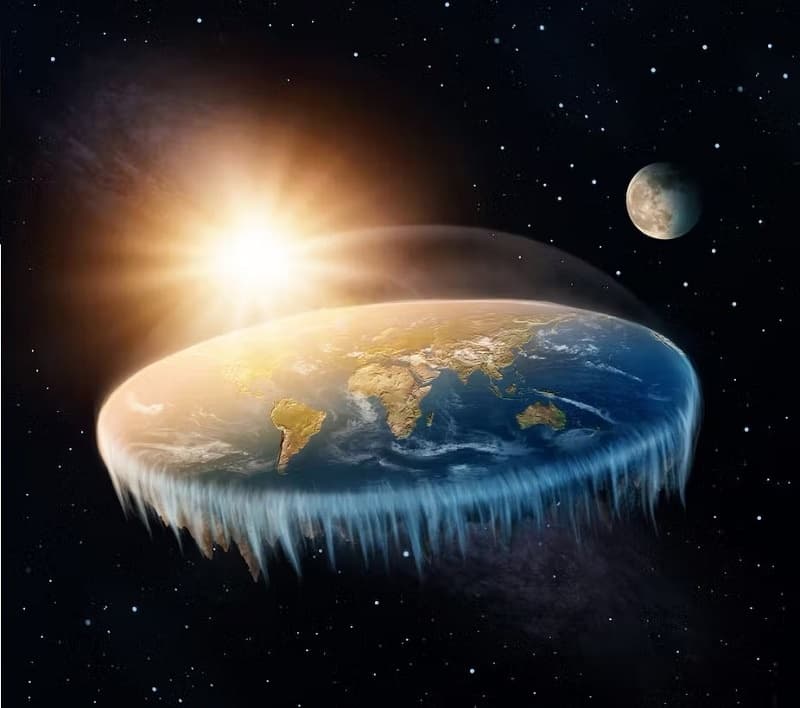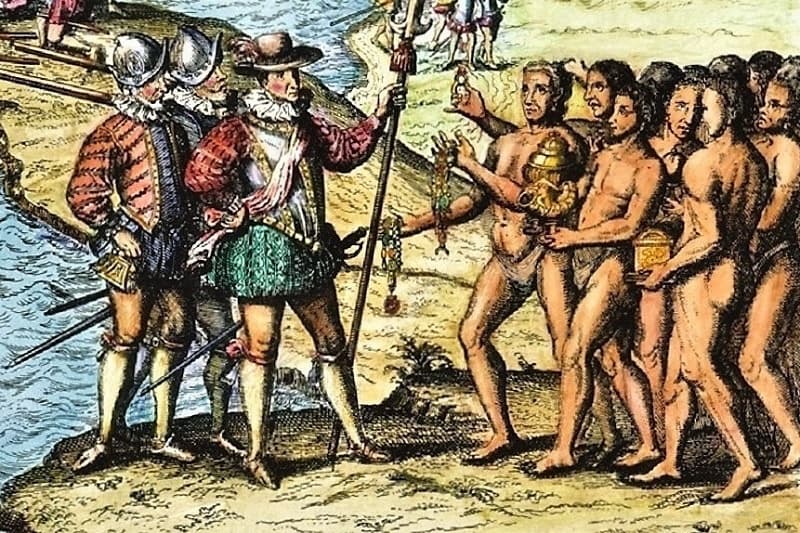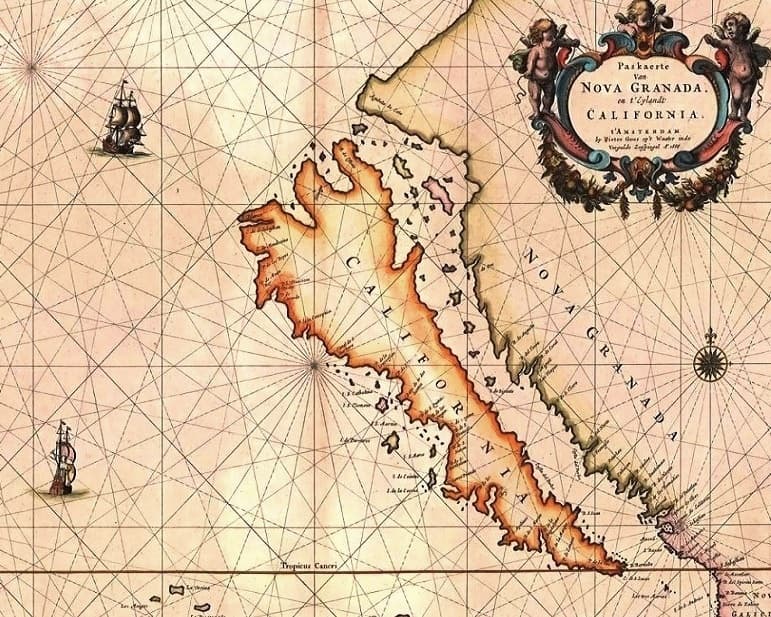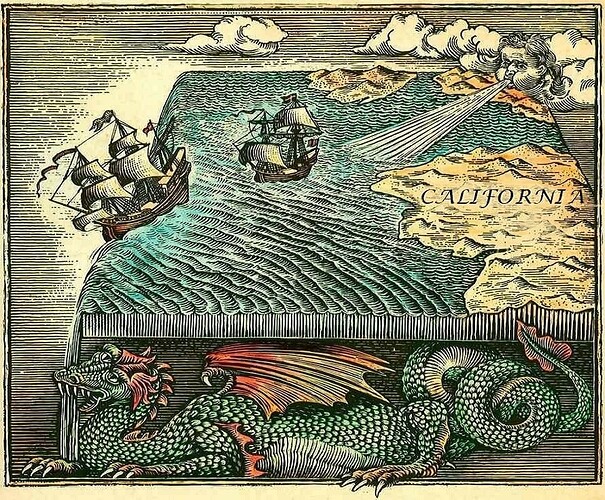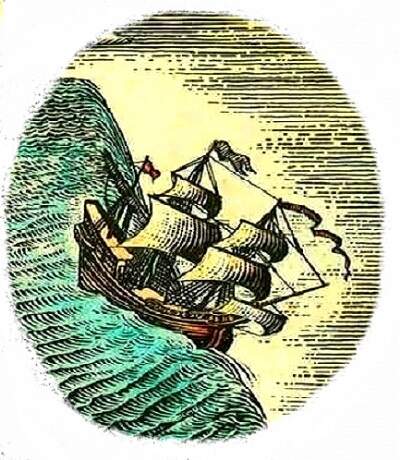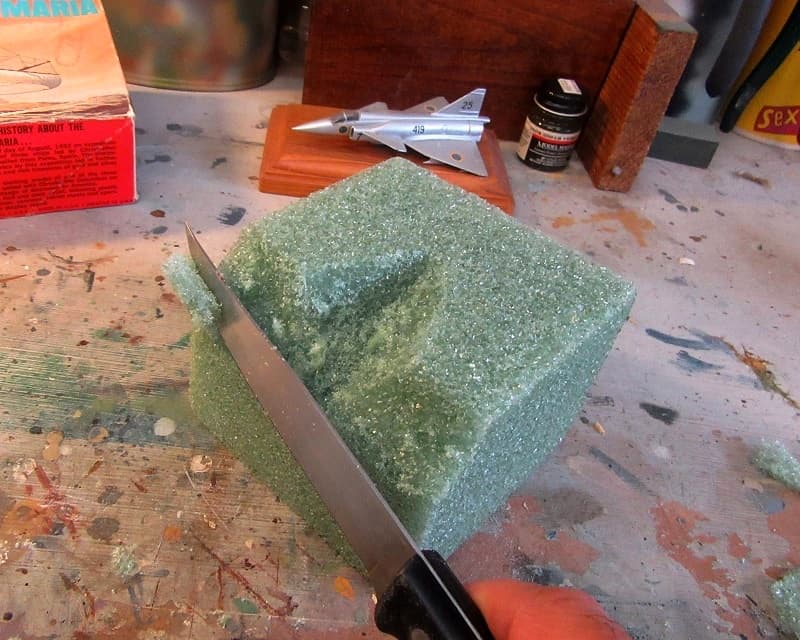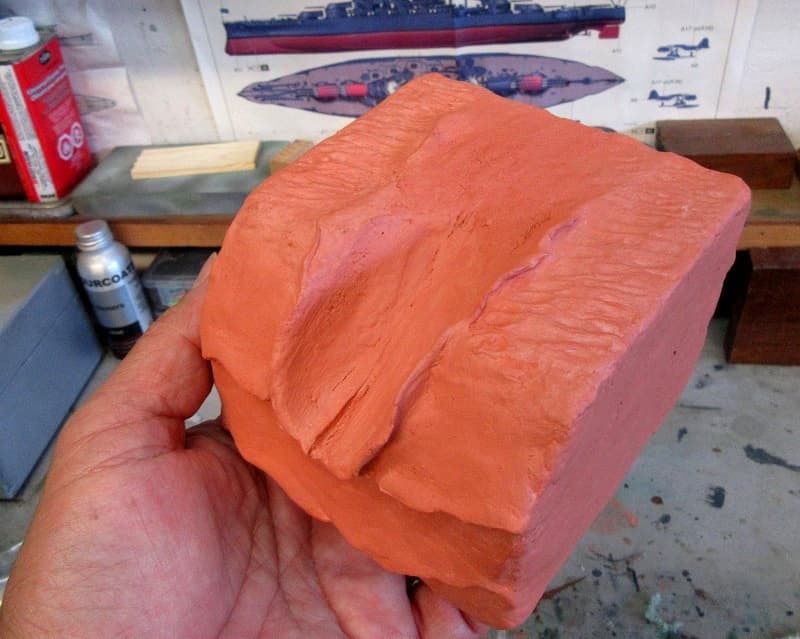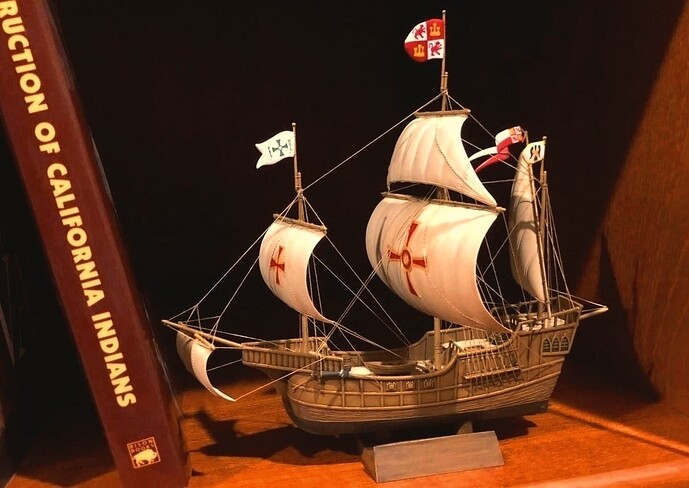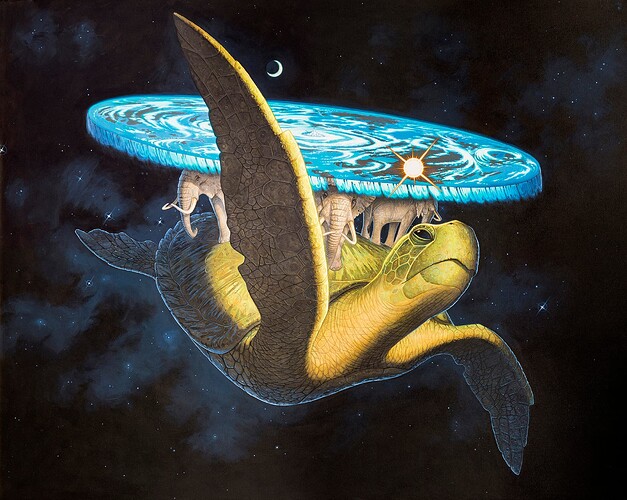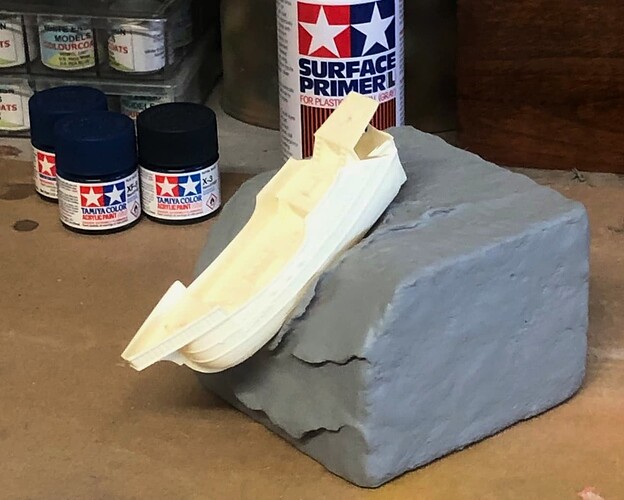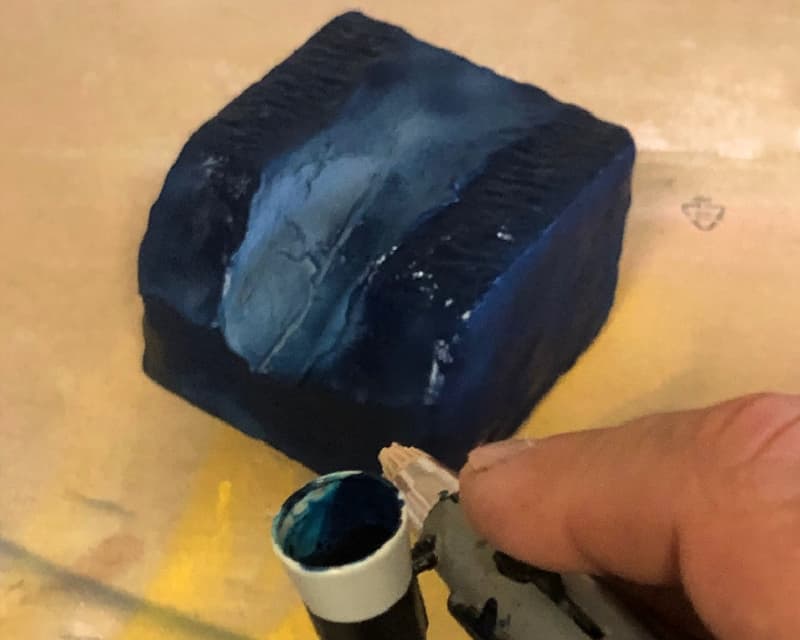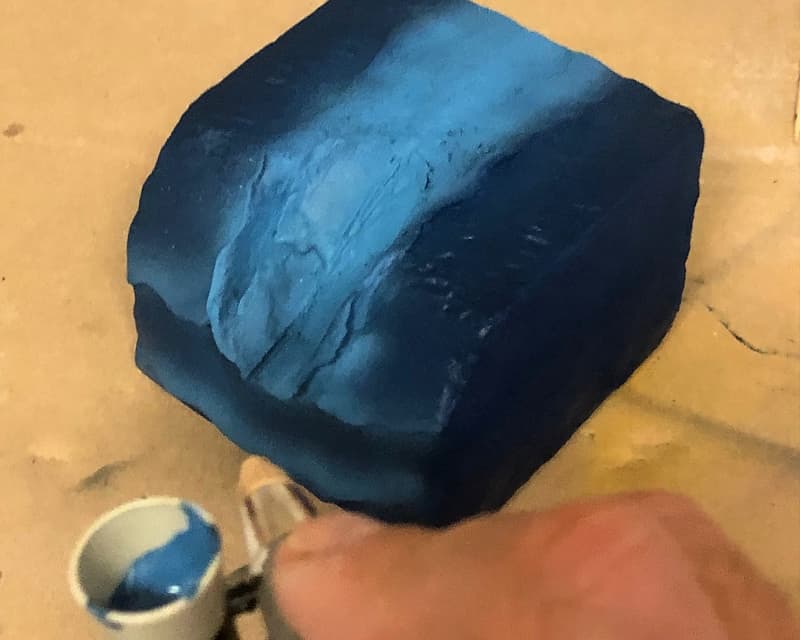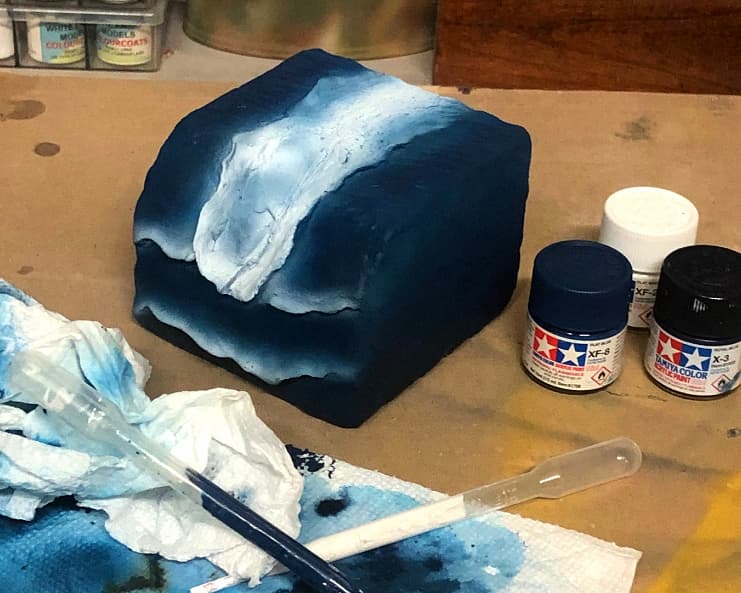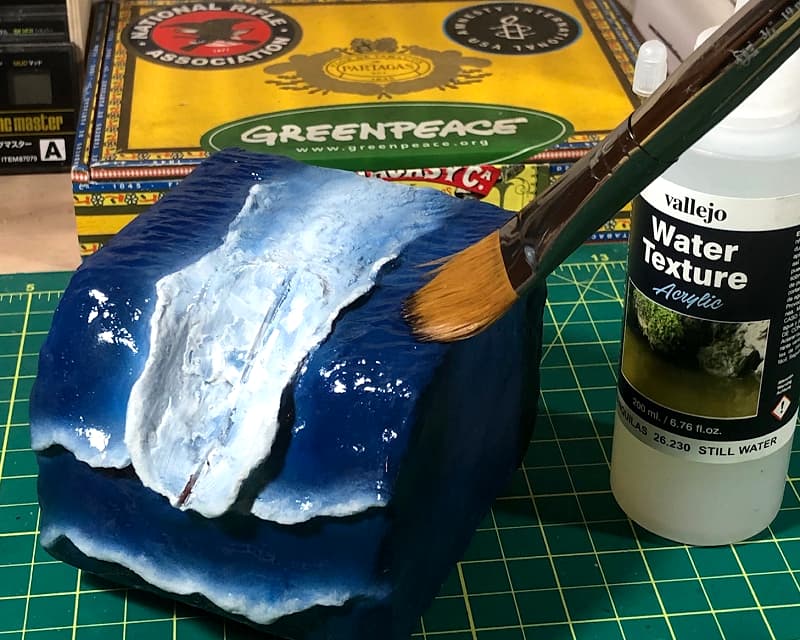A depiction of the end of the Santa María would be an interesting challenge, but I had some questions about the received version of these events. After doing a little more historical research, it became evident to me that the real story of Santa María’s end was somewhat different from the official version.
The world, as we now recognize, and as sensible Europeans at the time knew very well, is flat. Nevertheless, there were then (as now) a small but vocal group of reality-deniers promoting the ludicrous notion that the Earth was actually round – like a ball! Christopher Columbus was among the loudest of these nutters, and his antics so amused Queen Isabella of Castille that she eventually agreed to lend the expendable foreigner three second-hand ships just to see where his dopey ideas might take him.
Much to everyone’s surprise, the tiny fleet actually blundered into previously unknown (and, it turns out, clothing optional) lands. After they returned to Spain with such cool stuff as gold, tobacco, coca leaf, tomatoes, pineapples, the hammock (all well received) and syphilis (less popular), the Queen realized that her favorite loon had actually turned out to be a pretty good investment. Awkwardly, though, Columbus had returned without his flagship.
Apparently, having heard about a magical island called California, he had sent the Santa María and Pinta to check it out. Staying ashore himself to cavort with the natives, he was not aboard when the flagship ventured a little too close to the Edge of the World (California has always been on the Edge)…
– and over the Edge Santa María went!
Fortunately the Pinta had wisely held back and so, picking up Niña and the Admiral, they made their way back to Spain. Embarrassed by the loss of his flagship and unwilling to acknowledge proof of the Flat Earth (Round-Earthers being notoriously unimpressed by actual evidence), Columbus concocted the story of the ship being steered onto reefs by a naughty boy. Now the Queen didn’t buy this absurd tale for a minute, but she also knew a good thing when she saw one… Realizing that news of ships falling off the Edge of the Earth would be bad for business, she went along with it.
And so, until this very day, few people know the true story of the fate of the Santa María.
